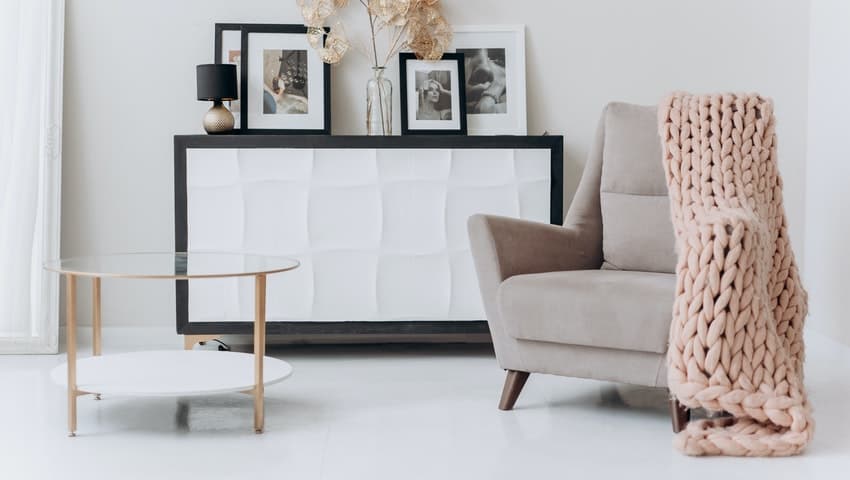How to Pick the Best Retail Store Layout for Your Business

You have the merchandise, now you need the foot traffic! Here’s how to design your store layout to help increase your customers.
Choosing the right store layout and design for a retail shop will look different for every business. From product displays to fixtures and merchandise, the decisions you make will depend on what you’re selling and who you’re selling to.
In this article, we’ll go through:
Three of the most common retail store layouts
How to optimize the displays in your shop
Different interior designs to consider
The factors that will impact your layout and design selections
Need Insurance for Your Small Business?
Sales Floor Designs to Choose From
Your sales floor design will directly influence the traffic patterns of your customers. From more structured layouts to ones that provide little direction, whatever you choose will depend on the type of retail store you own.
It’s also a good idea to consider any customer behaviour you may have observed. Often referred to as customer flow, this is the pattern of foot traffic most often seen in visitors to a store. In most cases, customers will opt to turn right when they initially enter, making their way through your space in a counter-clockwise direction. This means that the first display they typically encounter is along the right-hand wall, which is often referred to as your power wall.
Below, we go into detail on the different sales floor layouts that are most popular.
1. Grid Layout
Often used by grocery stores and pharmacies, the grid layout is immediately recognizable to consumers. The set up is created by long aisles that force customers to go up and down the paths to find the products that they need. In most cases, stores with this floor plan will provide signage above each aisle to inform customers of what’s there.
This type of design maximizes product display, and places staple items near the back of the store so that customers will need to pass lots of merchandise to get to what they need.
Grid layouts also put impulse buys close to the front of the store by the cashier, to encourage those last-minute purchases while customers are waiting in line to pay.
Variations of the grid store layout include:
Diagonal: Aisles are arranged on a diagonal, which is good for small spaces like convenience stores.
Herringbone: Typically seen in small bookstores or hardware shops, this setup is ideal if your space is long and skinny, as it utilizes small aisles off a central middle section.
2. Loop Layout
Also called the racetrack, the loop layout is a circular design that positions merchandise in the centre of the store, as well as around the edges. It forces your customers to start and end where you want them to, and pass by every item you sell. The loopy layout then ends at your checkout.
This type of floor plan is typical in many toy shops and large retail stores. One of the most well-known examples is IKEA.
3. Free Flow Layout
Our final store layout is known as the free flow design. It is exactly what it sounds like – a layout with no defined path or structure. Displays are set up throughout the store and customers are free to browse as they like.
Free flow layouts are popular in high-end clothing stores and speciality shops. A few variations on this design include:
Boutique: In this layout, merchandise is often displayed by brand, type of clothing, and sale items.
Straight: Also referred to as the spine layout, this design has low-level displays parallel to one another from front to back.
Angular: This design showcases rounded product displays and is popular for stores selling luxury merchandise.
Geometric: Popular for stores catering to younger consumers, this layout displays items in an assortment of shapes, sizes, and configurations.
Mixed: This layout takes elements from a variety of different layouts and is favoured by larger grocery stores and big franchises.
How to Optimize Your Display Designs
The design of your displays can have a big impact on how customers view your store. Here are three types of displays to consider when planning the design of your shop.
Window Displays
Your window displays are the first opportunity you have to grab the attention of your potential customers. Place popular or seasonal items here that you think will entice shoppers to enter your store and browse through your merchandise.
Product Displays
With your product displays, try to strategically select which items you want to showcase. Remember, customers are more likely to browse the items you put on these displays, than look through things you have on the shelves behind them.
It’s also important to identify which products you want on your power wall. As mentioned above, this is the first display your customers will encounter when they come into your store if they turn right.
Checkout Displays
The displays you put near your cashiers should have smaller or seasonal impulse purchases that customers can easily grab and add to their cart. You can even consider integrating these displays into your checkout line, which is a popular tactic in retail stores like Winners and Old Navy.
Choosing the Right Interior Design for Your Store
How you decide to decorate your store can have a direct impact on your customers’ experiences. For example, it would be pretty jarring for a customer to enter a grocery store that was designed like a nightclub and playing loud rap music. Instead, you’d likely want the vibe of this type of store to be more functional, with bright lighting, neutral tones, and more relaxed music.
On the other hand, a trendy clothing store might be more modern with louder music and a brighter colour palette. Or a hardware shop could offer a rustic feel, with a wood panelled design and earth tones integrated into the interior decorating.
What to Consider When Designing Your Store Layout
Although you might have your eye on a certain style of layout or a particular vibe for the design, it’s important to consider what you’re selling and who you’re selling to.
Your Product
If you’re selling food items, you’ll want to maximize inventory space to display all of your merchandise. This means that you’ll likely go with the standard layout that most grocery stores choose – the grid layout. You’ll also want to put relevant items in your window displays. So, aprons or oven mitts wouldn’t be the best choice, even if you sell them.
A retail space that sells clothing would, of course, be quite different!
Your Target Market
Selling high-end luxury clothing? Then your target audience is likely older professionals with money.
So, your store’s design should meet the expectations of that type of customer. With that in mind, your space will likely be more minimal in design with a free flow layout to spotlight your high-quality merchandise.
Related: Why Retailers Need Store Insurance
Protect Your Store with Business Insurance
Accidents happen in stores even with well-planned designs. If a customer slips and falls in your shop, you could be liable. Protect yourself with small business insurance.
APOLLO Has You Covered
Get the protection you need in minutes with custom Business Insurance from APOLLO.
Originally published May 18, 2022, updated August 25, 2023
Back to APOLLO MagazineGet Tenant Insurance in less than a minute
Get no-nonsense coverage that's the best value for your money. Purchase policies from your computer or phone, receive your documents instantly, and save when you buy online.
4.6 rating
Get Tenant Insurance in less than a minute
Get no-nonsense coverage that's the best value for your money. Purchase policies from your computer or phone, receive your documents instantly, and save when you buy online.
4.6 rating
Relevant articles
Getting insured is as easy as 1 - 2 - 3

Tell us (very little) about yourself
Just tell us your address, your name, email and phone number. And that's it. We'll give you a price in less than a minute.

Pay online easily and securely
You can choose to pay monthly or save money by paying for the entire year in one easy payment.

Get your documents in your inbox - instantly
As soon as you complete your purchase, you'll find your proof of insurance and policy documents waiting for you in your inbox.
Get covered today - it couldn’t be easier
We’ve provided more than 1,000,000 quotes to Canadians just like you. Give it a try!



